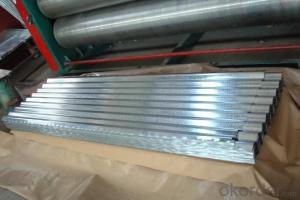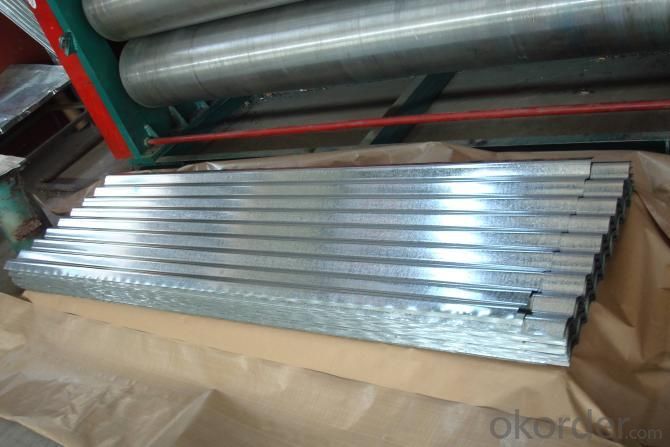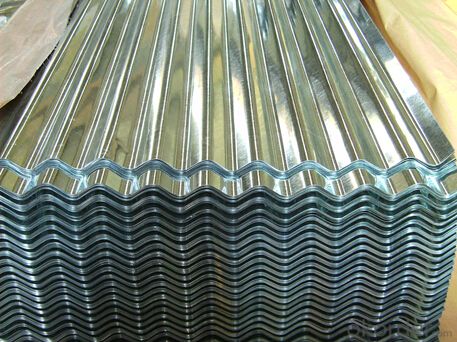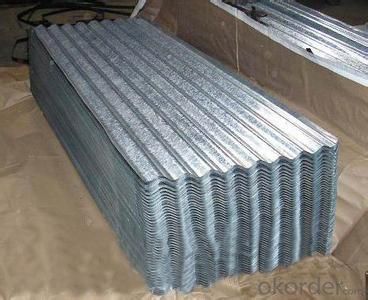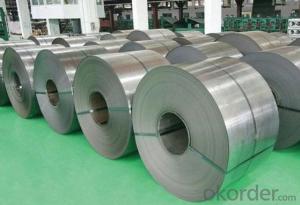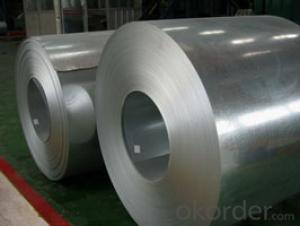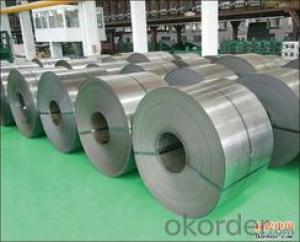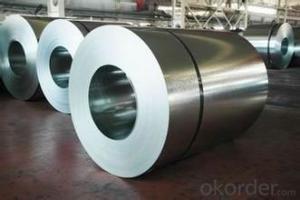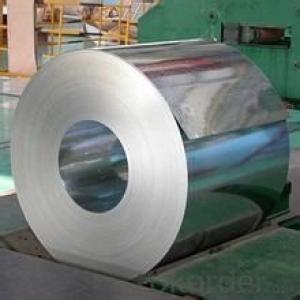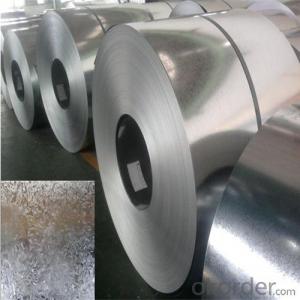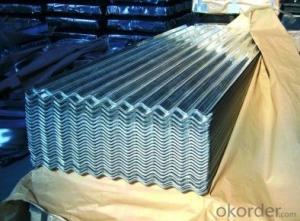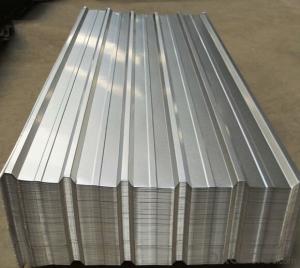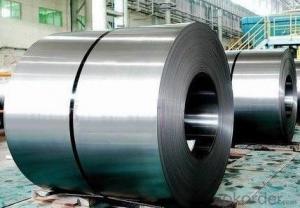Hot-Dip Galvanized Steel Roof with Different Types
- Loading Port:
- Tianjin
- Payment Terms:
- TT OR LC
- Min Order Qty:
- 50 m.t.
- Supply Capability:
- 10000 m.t./month
OKorder Service Pledge
OKorder Financial Service
You Might Also Like
1. Hot-Dip Galvanized Steel Roof Description:
Hot-dip galvanized steel roof are available with a pure zinc coating through the hot-dip galvanizing process. It offers the economy, strength and formability of steel combined with the corrosion resistance of zinc. The hot-dip process is the process by which steel gets coated in layers of zinc to protect against rust. It is especially useful for countless outdoor and industrial application.
2.Main Features of the Hot-Dip Galvanized Steel Roof:
• Excellent process capability
• Smooth and flat surface
• Workability, durability
• Excellent heat resistance performance
• High strength
• Good formability
• Good visual effect
3.Hot-Dip Galvanized Steel Roof Images
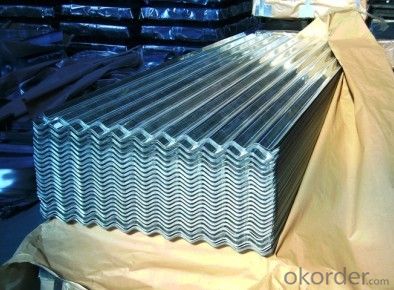
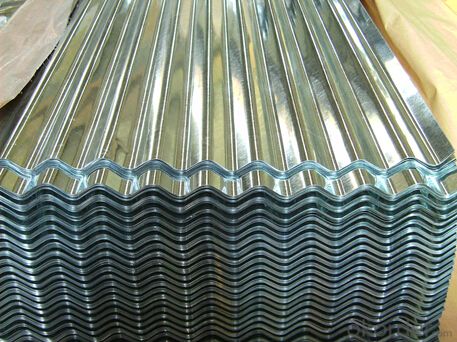
4.Hot-Dip Galvanized Steel Roof Specification
Material: Galvanized Sheet
Width: 650/800/890/900
Length: 1500/1800/2000/2400/3005/3600 or customized
Thickness: 0.2-2.0
Surface Treatment: chromated,oiled,skin-pass
Application: warehouse; shelter; Commercial facilities; industrial facilities
5.FAQ of Hot-Dip Galvanized Steel Roof
Which payment term we can do?
L/C at sight or T/T.
What’s the basic material of this product?
Galvanized/Aluzinc Steel
What’s the coating composition of Hot-Dip Galvanized Steel Coil?
The coating composition is 55% aluminium in weight ratio, 43.4% zinc, and 1.5% silicon, with excellent corrosion and heat resistance performance.
- Q: Which is more reactive? Zinc or Steel? And why?
- Zinc. Steel is an alloy consisting mostly out of iron, In the reactivity seris, zinc is more reactive than iron. Therefore, zinc is more reactive than steel
- Q: What we have to keep in mind before buying a steel building?
- Before okorder /... Hope this will prove helpful to you.
- Q: What are the common methods of painting steel coils?
- The common methods of painting steel coils include coil coating, spray painting, and electrostatic painting.
- Q: How do steel coils contribute to the manufacturing of construction materials?
- Steel coils play a crucial role in the manufacturing of construction materials by providing a versatile and reliable source of raw material. These coils are manufactured from high-quality steel and are typically used as a primary input in various construction processes. One of the main contributions of steel coils in construction material manufacturing is their ability to be shaped and formed into different products. These coils can be easily cut, bent, and molded to create a wide range of construction materials such as beams, pipes, and sheets. This versatility allows manufacturers to produce customized construction components that meet specific project requirements. Furthermore, steel coils provide strength and durability to construction materials. Steel is known for its exceptional tensile strength, which makes it an ideal choice for load-bearing structures and components. By using steel coils, manufacturers can produce construction materials that can withstand heavy loads, extreme weather conditions, and other environmental factors, ensuring the longevity and safety of the final construction product. In addition, steel coils offer consistency in quality and performance. The manufacturing process of steel coils involves stringent quality control measures, ensuring that the final product meets the required specifications. This consistency in quality gives construction material manufacturers the confidence to produce reliable and high-performance products consistently. Steel coils also contribute to the efficiency of construction material manufacturing. The availability of steel coils in large quantities and standardized dimensions allows for streamlined production processes. Manufacturers can optimize their operations by utilizing automated machinery and processes, reducing production time and costs, and increasing overall efficiency. Overall, steel coils are an essential component in the manufacturing of construction materials. Their versatility, strength, consistency, and efficiency make them a preferred choice for construction material manufacturers. By using steel coils, manufacturers can create high-quality and reliable construction materials that contribute to the safety, durability, and aesthetics of various construction projects.
- Q: What are the different types of steel coil packaging materials for export?
- Various steel coil packaging materials are commonly utilized for export. These include: 1. Steel Strapping: A frequently employed option, steel strapping ensures robust and reliable packaging for steel coils. It offers excellent protection during transportation and is available in different widths and thicknesses to accommodate varying coil sizes. 2. Stretch Film: This flexible and elastic material is often employed to wrap steel coils securely. By preventing shifting or falling during transit, stretch film ensures tight and dependable packaging. Moreover, its lightweight nature aids in reducing shipping costs. 3. Corrugated Cardboard: Frequently used as an outer packaging material, corrugated cardboard provides additional protection against external impacts and acts as a cushioning material. It is available in various strengths and sizes to suit different coil dimensions. 4. Wooden Crates: Wooden crates are a popular choice for packing larger steel coils. They offer a sturdy and robust packaging solution, effectively safeguarding against impacts, moisture, and other environmental factors. These crates can be customized to fit specific coil sizes and are often employed for heavy-duty or long-distance shipments. 5. Plastic Strapping: Plastic strapping serves as an alternative to steel strapping, particularly for lighter coils. It is lightweight, easy to handle, and resistant to rust and corrosion. Plastic strapping is available in different colors, facilitating easy identification and sorting. 6. VCI (Volatile Corrosion Inhibitor) Packaging: VCI packaging materials are specifically used to protect steel coils from corrosion during export. These materials release a vapor that forms a protective layer on the surface of the coils, preventing rust and corrosion even in high humidity or harsh environments. When selecting the appropriate packaging material for export, it is crucial to consider the size, weight, and specific requirements of the steel coils. Additionally, adherence to international shipping regulations and standards is essential to ensure a safe and efficient transportation process.
- Q: steel structure
- Disadvantages Of Steel
- Q: Is steel cut really better? The nutritional profiles are nealy identical. Which one has the best flavor??Thanks!
- Steel cut oats taste the best but rolled oats will do just fine too.
- Q: What are the different types of steel coils?
- There are several different types of steel coils, including hot-rolled coils, cold-rolled coils, galvanized coils, and stainless steel coils.
- Q: How are steel coils used in the manufacturing of tubes?
- Steel coils are used in the manufacturing of tubes by being processed through a series of steps such as slitting, forming, and welding. These coils are slit into narrower strips, which are then formed into a cylindrical shape and welded together. This process allows for the efficient production of seamless or welded tubes, which can be used in various industries such as construction, automotive, and oil and gas.
- Q: Can steel coils be used in marine environments?
- Yes, steel coils can be used in marine environments. However, it is essential to ensure that the steel coils are properly protected against corrosion, as the saltwater and high humidity in marine environments can accelerate the process of rusting. Various coatings and treatments can be applied to steel coils to enhance their resistance to corrosion and make them suitable for use in marine applications.
Send your message to us
Hot-Dip Galvanized Steel Roof with Different Types
- Loading Port:
- Tianjin
- Payment Terms:
- TT OR LC
- Min Order Qty:
- 50 m.t.
- Supply Capability:
- 10000 m.t./month
OKorder Service Pledge
OKorder Financial Service
Similar products
Hot products
Hot Searches
Related keywords
